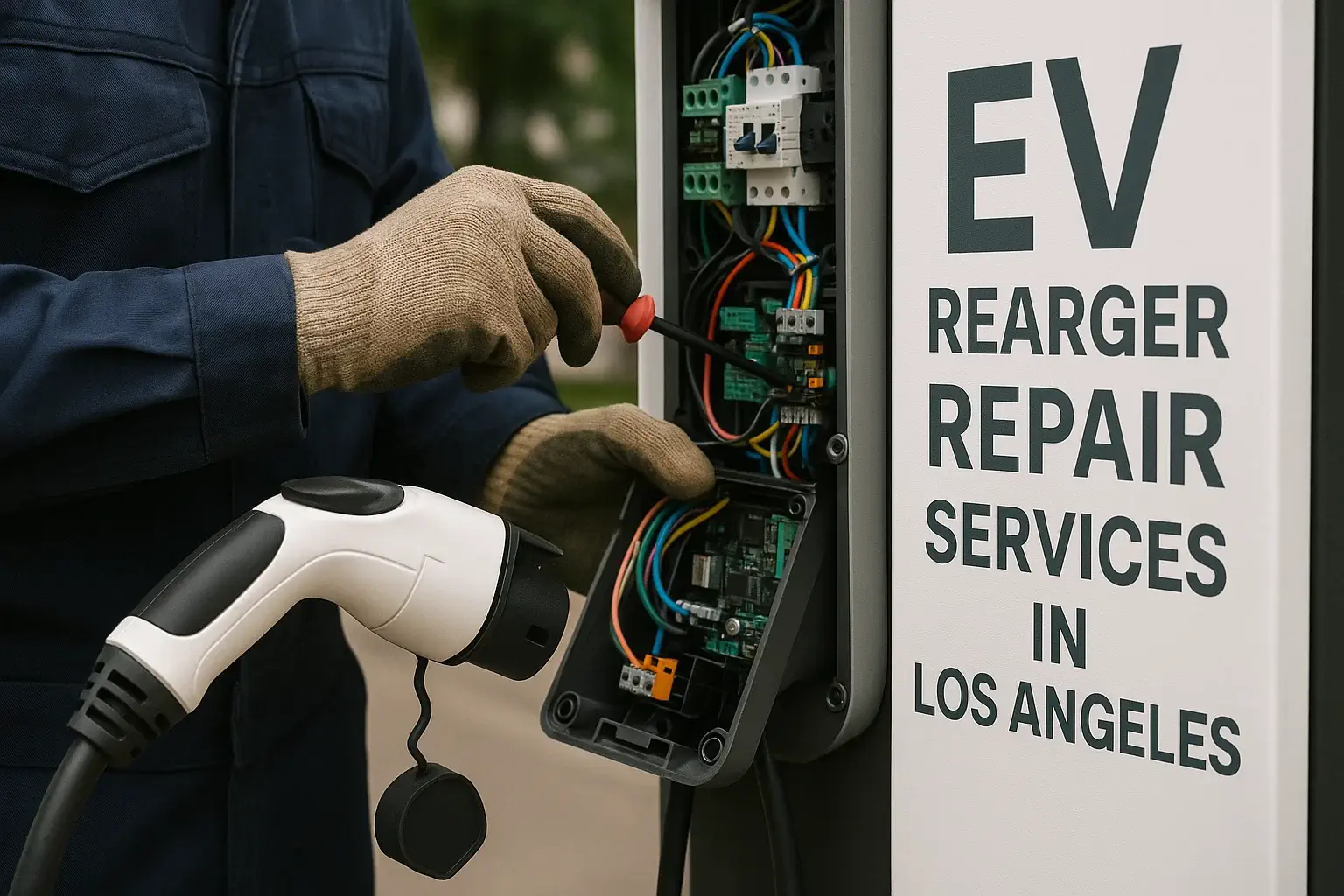
A surprising share of “dead” chargers in Los Angeles aren’t dead—they’re suffering from moisture in outdoor conduit, a tired breaker, or a misconfigured amperage setting. Before you pay for a new unit, get a clear, written diagnosis from a specialist EV charger repair technician who sees these issues every day.
If your charger won’t start, keeps tripping, or shows error lights, EV charger repair in LA usually comes down to three buckets: (1) EVSE hardware faults (relay/board, contactor, fan), (2) circuit/wiring issues (loose terminations, GFCI trips, moisture), or (3) network/commissioning problems (Wi-Fi, firmware, app). A licensed Los Angeles electrician should diagnose with meter tests and inspection of the dedicated 240V circuit. Most fixes are same-day; water damage, melted plugs, or burnt lugs can require parts or replacement. For Tesla owners, Tesla EV charger repair in la often includes re-commissioning, load-sharing checks, and plug/connector inspection. If you need a new unit, we’ll quote a clean Level 2 EV Charger Installation that passes inspection the first time.
Charger acting up? Get Same-Day EV Charger Repair in Los Angeles
We diagnose the circuit and the unit, fix what’s fixable, and if needed quote a clean, permit-ready replacement.
What Counts as EV Charger Repair (and what it doesn’t)
When people search ev charger repair, they’re often mixing three different jobs. Here’s how we separate them so you don’t overspend:
- Charger hardware repair
Board or relay faults, fan failures, LED/error codes, connector wear, cracked housings, or melted plugs. Some brands allow component replacement; others require full unit swap. - Branch-circuit and wiring repair
Breaker nuisance trips, aluminum pigtails, overheated lugs, undersized conductors, or GFCI mis-wiring. Repairs include re-termination, upsizing conductors, replacing breakers, and moisture mitigation. - Network/commissioning repair
Failed commissioning, incorrect max-current settings, load-sharing misconfig, app pairing issues, and firmware updates—common with smart Level 2 units and Tesla Wall Connectors.
If your charger is still under warranty, we prioritize documented tests so the manufacturer honors parts replacement.
Fast Triage: Symptoms → Likely Causes
- Breaker trips immediately → ground fault, shorted cable, water in conduit, or a failing charger contactor.
- Trips after minutes of charging → thermal issues, loose lugs, undersized wire, or fan failure in the unit.
- No lights at all → dead breaker, open neutral, failed internal power supply, or a hidden GFCI trip.
- Car shows “charging unavailable” → handshake error; check pilot signal, settings, or vehicle inlet debris.
- Wi-Fi/app drops → commissioning not completed, 2.4 GHz issues, or outdated firmware.
What Your Technician Should Check
- Panel health: breaker sizing, heat marks, torque on lugs, bonding/grounding.
- Conduit route: low spots (water traps), cracked fittings, sun-exposed runs without proper fittings.
- Terminations: copper vs. aluminum, anti-oxidant where required, ferrules in some terminations.
- GFCI logic: whether protection is in the breaker, the EVSE, or both (avoid “double GFCI” nuisance trips).
- Charger configuration: output amperage matched to breaker, firmware current, load-sharing settings.
- Connector & cable: wear, pitting, heat discoloration, bent pins, holster sealing for outdoor units.
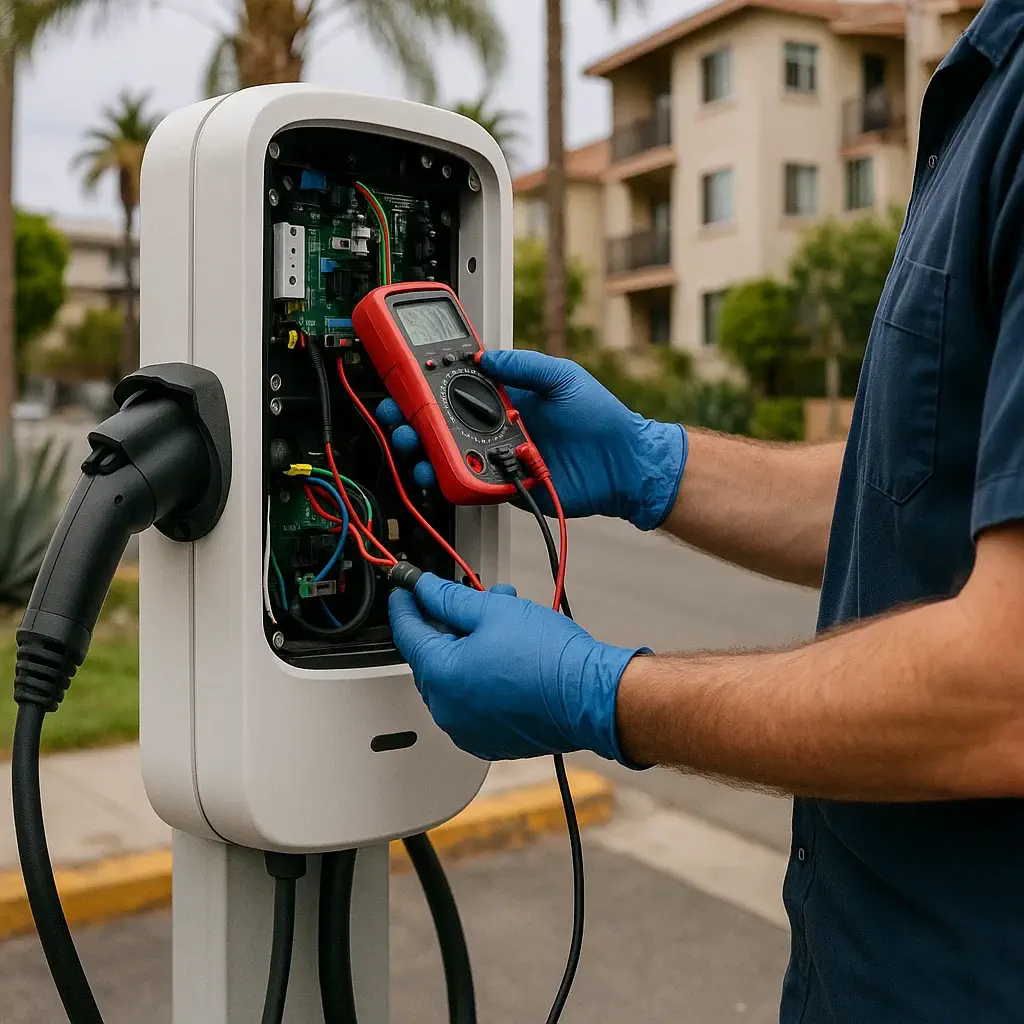
Tesla-Specific Notes (Wall Connector)
For Tesla ev charger repair in la, we commonly see:
- Load-sharing misconfig: two Wall Connectors fighting for current; fix with proper leader/follower setup.
- Wrong circuit setting: internal dip/app setting not matched to breaker size, causing trips.
- Connector wear: heavy daily use outdoors; inspect pins and the holster seal.
- Commissioning lockouts: incomplete first-time setup; re-commission through the built-in Wi-Fi.
If the unit is beyond repair, we’ll quote a neat replacement and, if desired, re-route to shorten conduit and lower future stress—standard Tesla EV Charger Installation in Los Angeles best practice.
Repair vs. Replace: When Each Makes Sense
- Repair when: the enclosure is intact, no major water ingress, parts are available, and wiring is correctly sized.
- Replace when: the board is fried by moisture, the connector is heat-damaged, or parts are NLA (no longer available). Replacement is also smart when upgrading amperage or adding a second EV (load-sharing).
If replacement wins, tying it into ev charger installation los angeles standards (permit, labeling, inspection) protects resale and insurance—and prevents repeat failures.
Estimated Timelines & Typical Costs (Guidance, not a quote)
- Diagnosis visit: 45–90 minutes for tests and written findings.
- Minor repair (re-termination, breaker swap, settings/firmware): typically same-day.
- Moisture remediation (fittings, re-run a segment): same day to 1–2 days.
- Board/part replacement: depends on brand/stock; we’ll provide options and timelines.
- Full replacement: usually one working day with permit where required.
Curious about installation pricing if replacement is needed? See How Much Does It Cost to Install an EV Charger in Los Angeles? for realistic ranges, or jump to our Guide to Installing a Home EV Charger in Los Angeles if you’re planning a route change or a future second EV.
EV Charger Installation, Replacement & Repair — Recent Projects
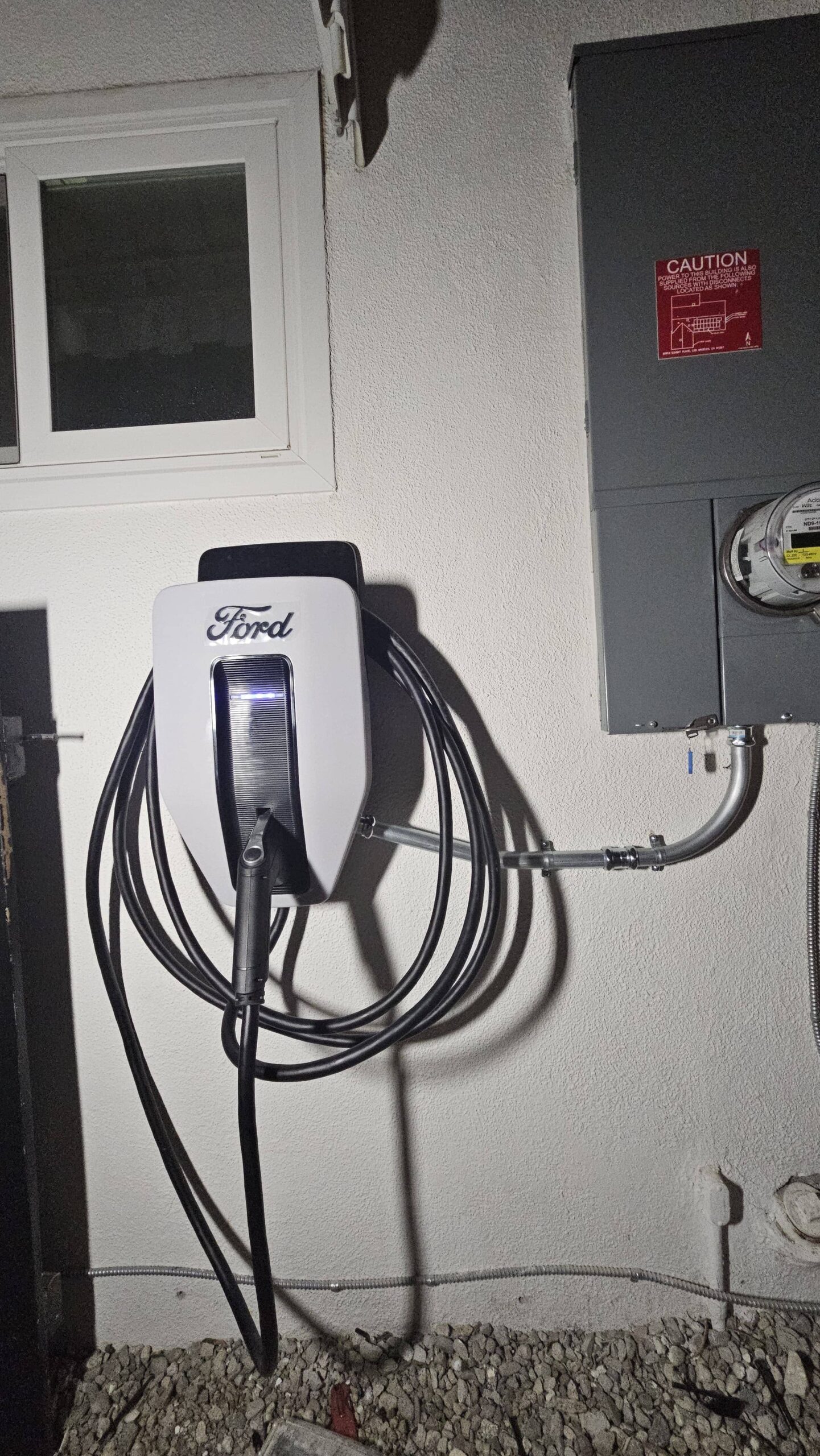
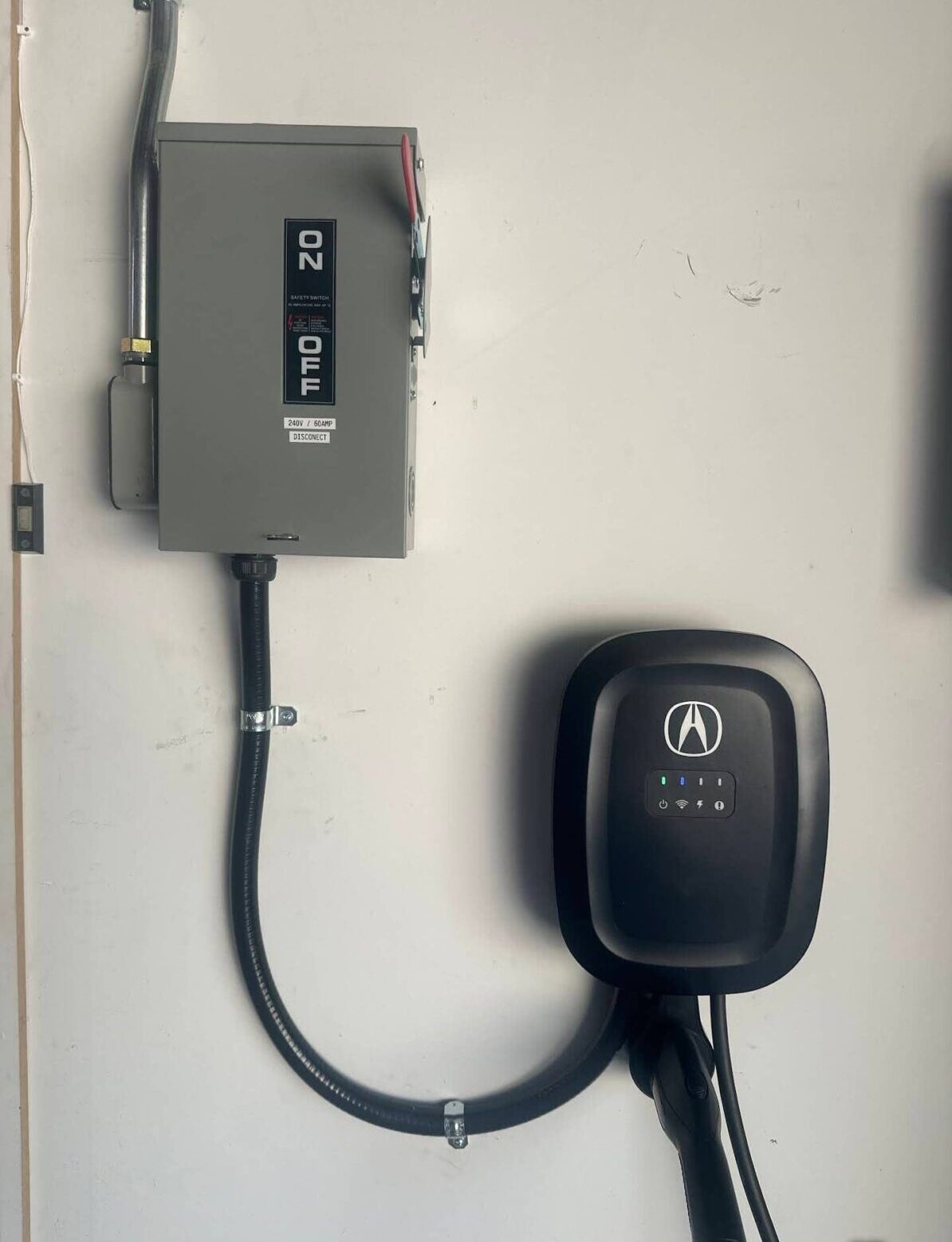
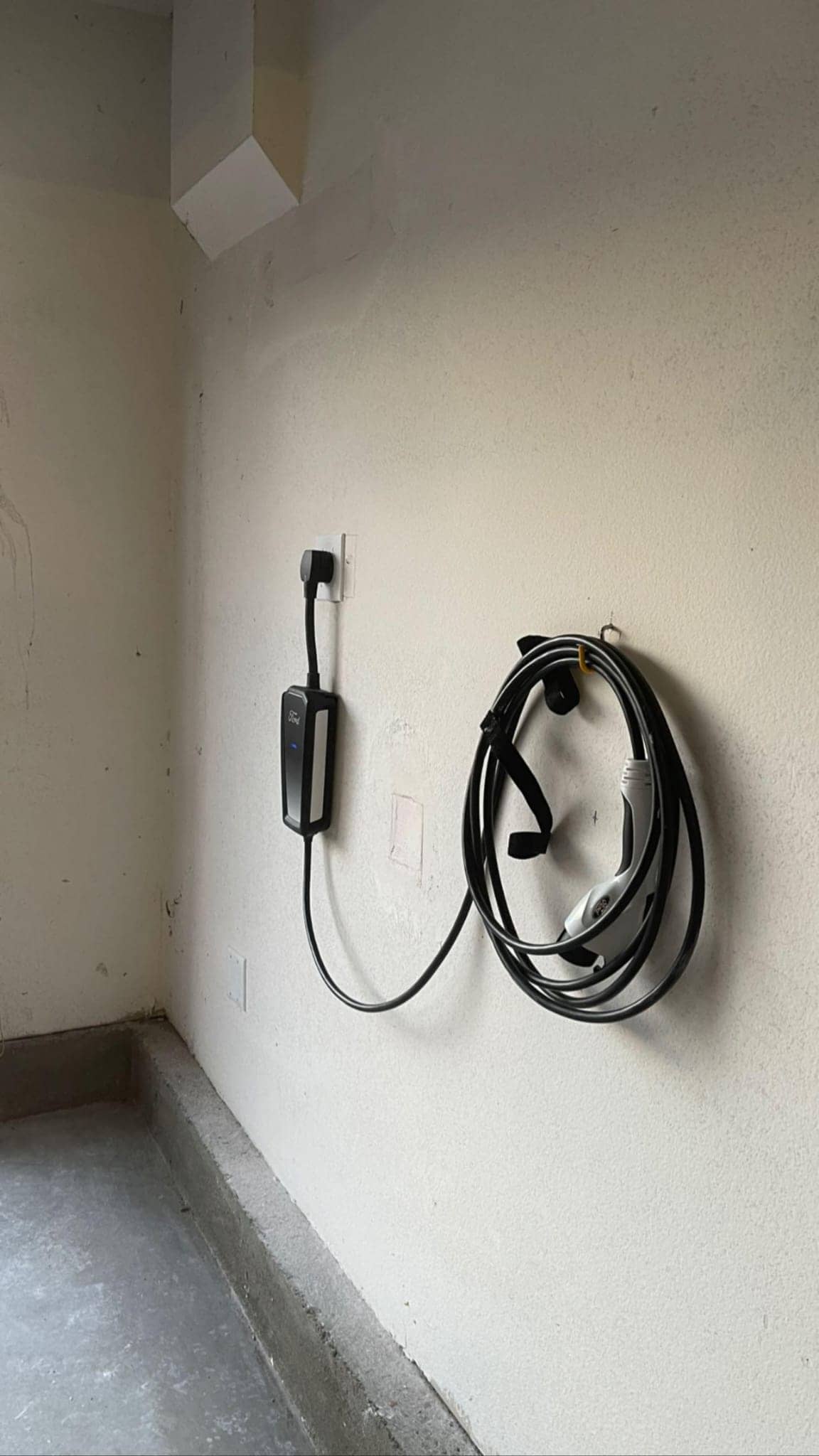
FAQ (Direct Answers)
For straight repairs (no circuit changes), often no. If we replace/rewire the circuit or relocate the EVSE, a permit/inspection may apply.
We service most major Level 2 brands and can source parts or a compatible replacement when repair isn’t economical.
We’ll test for water in conduit/boxes, replace compromised fittings, and evaluate the EVSE board. If the board is damaged, replacement is usually faster/safer.
Sometimes the trips are wiring/config issues. If your service is truly maxed, a 200 Amp Panel Upgrade in Los Angeles or load management may be the right move.
Yes—especially if the current route causes heat or moisture problems. We’ll re-route to a shorter, cleaner path and label everything for inspection.



Leave a Reply